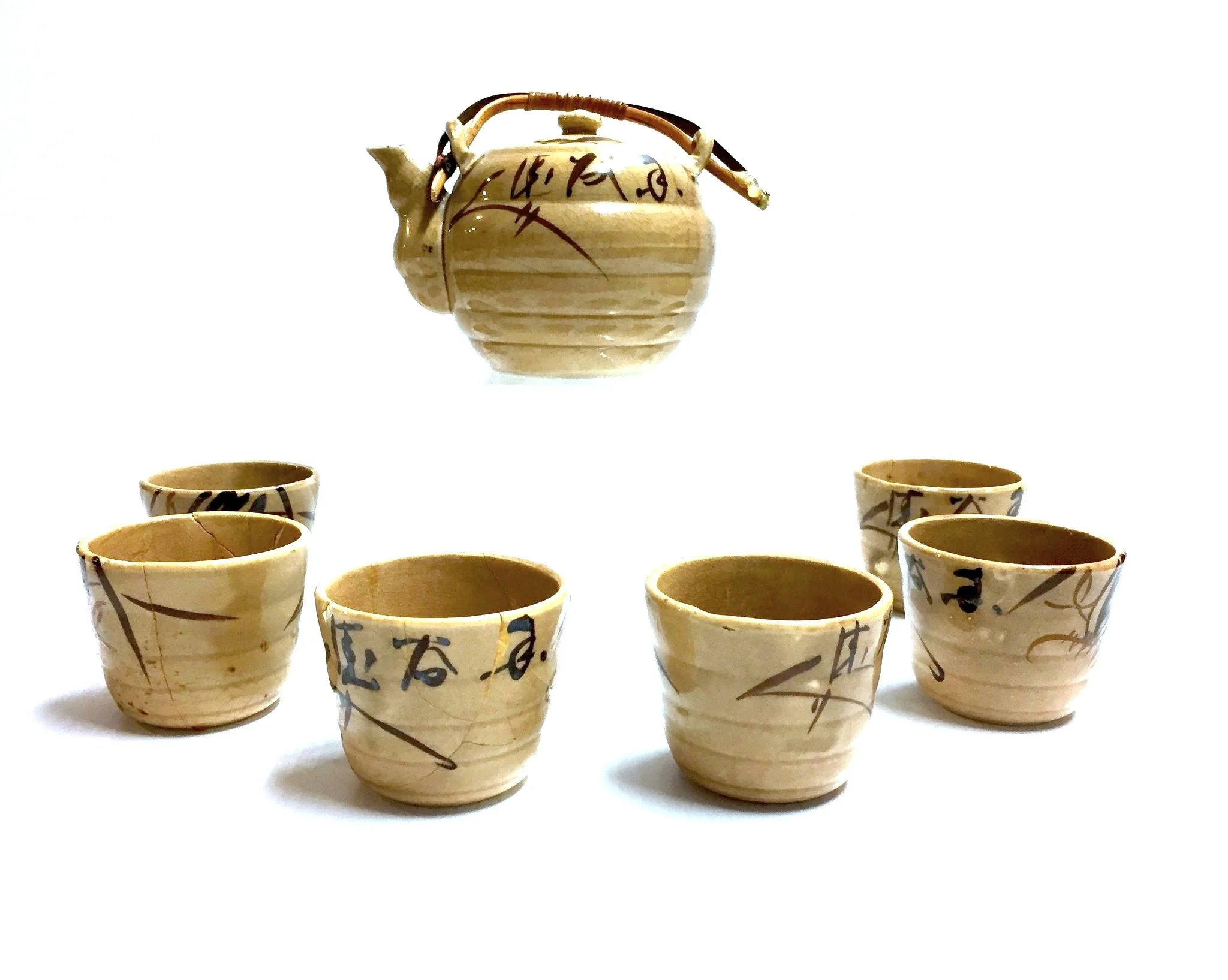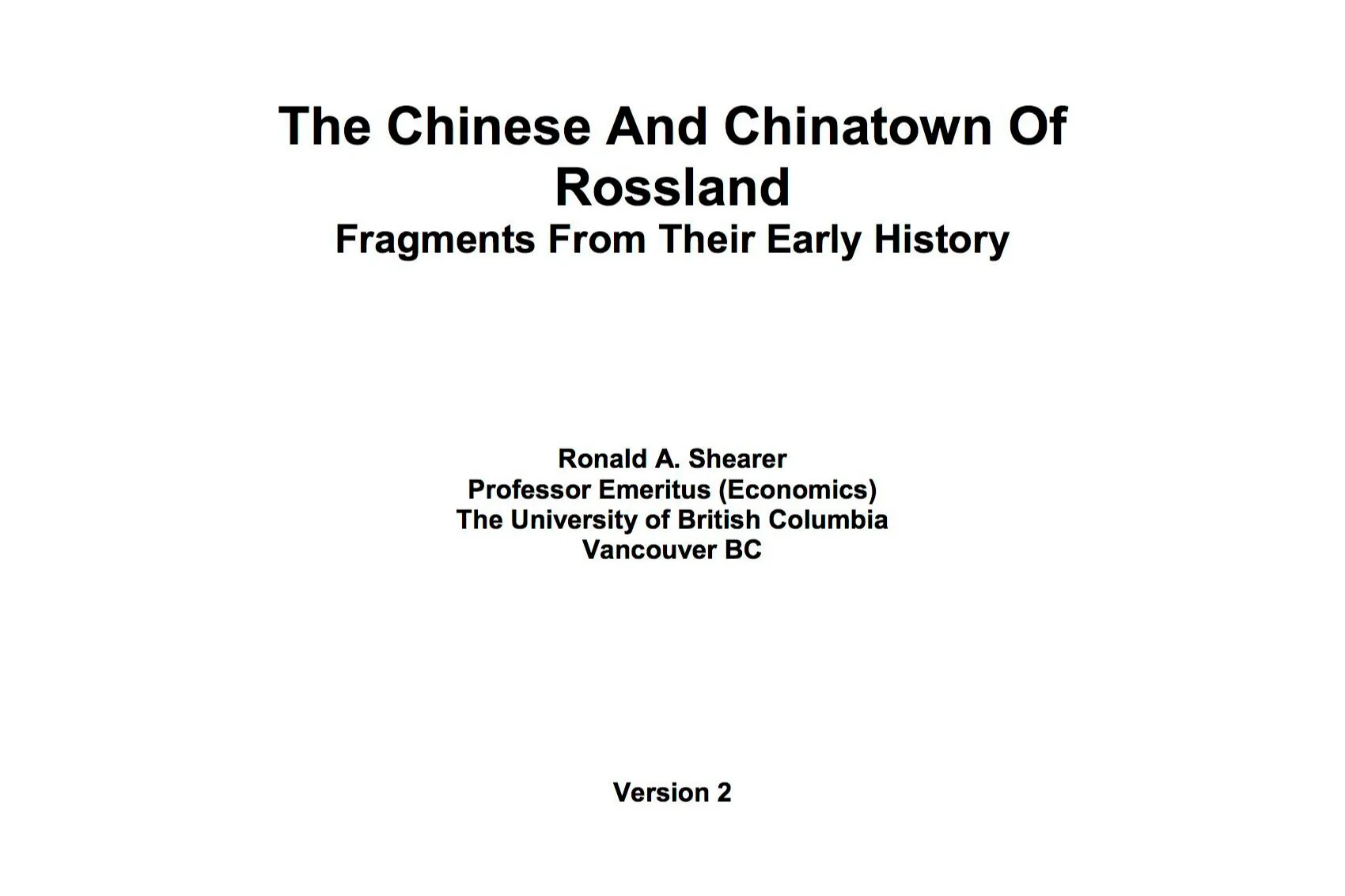Chinese People in Early Rossland
The story of Rossland’s early Chinese population is one of discrimination and perseverance, struggle and determination. They worked tirelessly to earn money to send to their families in China, even though in most cases, the Chinese men in Rossland would never see their families again. With the Fraser Canyon and Cariboo gold rushes played out, the lure of gold in the Kootenays drew many miners looking for the next bonanza. The promise of gold and the opportunities a mining town offered were likely the driving force for Chinese migration to Rossland as well. The majority of Chinese men that came to Rossland were not involved in the mining industry, however, they provided much-needed services to the developing town.
** ** + General History More Info
According to the 1901 census, only two of the 231 Chinese men in Rossland identified as miners. This was primarily because of the Metalliferous Mines Act passed by the British Columbia Government in 1897. The Act prevented Chinese and Japanese individuals from working in underground mines— precisely what finding gold in Red Mountain required. Instead, the top occupations amongst the men were launderer (97), cook (53), gardener (32) and labourer (20).
In the 1890's several Chinese men owned businesses like laundries, and stores were located throughout Rossland. However, by the turn of the century, they were centralized in Rossland’s Chinatown around the eastern end of Kootenay Avenue in lower Rossland. This area was home to businesses like laundries, general stores, the Chinese Gardens and a herbal shop. The herbal shop sold traditional medicines that were imported (large turtles that children would often ride), grown locally or hunted (black bear). The Chinese Gardens provided Rossland with fresh produce during a time when most groceries were either dried or canned. There were also several Chinese cafes/restaurants in Rossland.
In the late 1890’s, Rossland’s population reached upwards of 7000 people. With dozens of hotels and boarding houses in town, there was no shortage of work for the Chinese laundries in operation. Clean laundry was wrapped in a sheet, tied to a stick for carrying and delivered back to its owners. Hop Chung Laundry (Washington Street, between 1st and 2nd Avenues) was one of the many well-known Chinese laundries in Rossland. In 1902 the City of Rossland adopted the Laundry Bylaw (Bylaw #83) that prevented the construction of any more laundries north of Kootenay Avenue.
Life in Rossland
The first Chinese migrants to Rossland were permitted to live in the unsettled area of lower Rossland (below Le Roi Avenue). Between 1897 and 1942 there were 117 Chinese-owned properties in Rossland. More often than not, the men slept where they worked. Launderers had bunks in the laundries and gardeners stayed in simple shacks with dirt floors.
The Chinese community quickly established their own social and business hub (known as Chinatown), the centre of which was the Chinese Masonic Hall (St. Paul Street and Kootenay Avenue). It was where the community gathered to celebrate holidays like Christmas and Chinese New Years or listen to the Chinese band practice. Unfortunately, like many of Rossland’s early buildings, the Chinese Masonic Hall was destroyed by a fire in 1919. It was rebuilt sometime after 1929 but was ultimately torn down in the 1950s.
Like many of the Chinese in British Columbia, unfortunately, Rossland’s Chinese community was repeatedly subjected to discrimination and racism. Federal laws like the 1885 Chinese Immigration Act (later the Chinese Exclusion Act) made immigration to Canada increasingly expensive because of the head tax or impossible between 1923 and 1947. Within Rossland, city bylaws limited their businesses opportunities and there was little interaction between the Chinese community and other Rossland citizens outside of purchasing products or services from them. Despite this, the Chinese community persevered and made a significant contribution to the sustainability of Rossland, particularly through the Chinese Gardens.
The Chinese Gardens
Historical Name: Chinese Gardens
Common Name: Chinese Gardens
Physical Address: Southern Rossland
Date(s) of Construction: Circa 1898
Common crops included cabbage, beets, tomatoes, potatoes, carrots, peas, and various types of fruit.
While evidence of the Chinese Gardens’ existence is hardly visible, the site remains as an important reminder of Chinese Canadians’ role in the area’s agriculture industry. The gardens were in operation from the 1890’s until the 1950’s.
+ Chinese Gardens More Info
Today this area is identified mostly by open grassland, around Trail Creek and down Trail Creek Valley to the Columbia River. There is little evidence of the Chinese farms and their owners – some fruit trees, a rock wall, rock piles, trenches and depressions which were once root cellars. From around 1898 to the 1950s Chinese Canadians cultivated 70 acres of land in lower Rossland, growing fresh fruit and vegetables. The Chinese Masonic lodge opened in 1903 and boasted a membership of 100. It was an important site in Rossland’s Chinatown, which occupied a distinct area most of which was destroyed by fire in the early 1920’s. The buildings that survived the fire gradually fell into disuse and eventually disappeared. The last landmark was the Chinese Masonic Temple, which was torn down about 1950. All traces of Chinatown have now disappeared and the site is now a residential area.
The Chinese men were among the earliest settlers to Rossland, who arrived in B.C. to work on the Dewdney Trail, or later the railroads, most famously to build the CPR. Many of the railway workers who ended up in Rossland came from what is now the province of Guangdong, due to its relative openness to Western trade which made immigration more possible. These men faced legalized discrimination and were prohibited from working in the main industries of the town, notably the mining industry which had brought most other men and immigrants to Rossland.
This left agricultural, laundry services, and general stores as the industries where the Chinese men were able to work.
Cultivating and selling vegetables was a common form of income for Chinese communities across the southeast interior of B.C, and with a population as booming as Rossland this was a perfect market, and thus the Chinese gardens were established. Some of the land was owned by the Chinese gardeners, and some was leased to them by the city. Due to the discrimination of the time however, exact information on the lives of these gardeners is difficult to attain, though it is thought that the gardeners were self-sufficient, working independently and living in modest homes within the gardens.
The gardeners would carry their produce up into the center of Rossland, selling directly to customers who would have a personal relationship to a specific vendor. All the landscaping of the land was done by the Chinese, and must have been quite an undertaking, as newspapers remarked on the unexpected success of the gardens after they had been set up by the gardeners. In 1949, two large parcels of land containing the majority of the Chinese gardens area were sold to two families, ending the era of the Chinese Gardens.
Rossland Miner - May 2nd, 1903.
A visit to the southeastern section of the city, where the Chinese gardens are located, is a revelation to the citizen who has paid no attention to the possibilities of this country from the agricultural standpoint. It is genuinely surprising to note the remarkable results attained by the sons of the Flowery Kingdom in was what regarded as a district of little promise…
[They] have cleared and cultivated an area of 50 or seventy-five acres…
Chinese Masonic Hall
The Chinese Masonic Hall (also referred to as the Chinese Masonic Temple and the Chinese Masonic Lodge) was an important meeting and gathering place for the Chinese people in Rossland. Events such as Christmas dinners were held in the Hall and it was also where Chinese newspapers were ordered in for residents. By the 1930s, the Chinese Masonic Hall was the last remaining building of Rossland’s former Chinatown, which stretched two city blocks. In 1952, the building changed ownership and was torn down.
For Additional Information:
Royal BC Museum Learning Portal
Ron Shearer’s Essay: The Chinese and Chinatown of Rossland - or click the cover page ->
Rossland Heritage Commission Official Heritage Register - Sites: Chinese Gardens Statement of Significance
Heritage BC’s Chinese Canadian Historic Places Interactive Map (Rossland-specific link)
Michael Ripmeester’s Article in The Mining History Journal (1997): Placed on the· Margins: The Idea of Chinatown In Rossland, British Columbia, 1890-1902
Continue the Indoor Tour:
Contribute your own memories/experiences of Chinese History or the Chinese Gardens:
The form below will email us your message. If you prefer to speak to us directly or have other questions or comments about this page, please call (250) 362-7722 or email the archives directly at archives@rosslandmuseum.ca






